Green-Turned Bowls: Working With Warp
In this excerpt from his new book, The Art of Turned Bowls, Richard Raffan explains how to plan and turn beautiful bowls from freshly cut wood.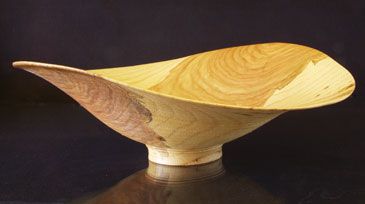
Perhaps the best thing of all about turning green wood is that you can create a top-quality bowl in less time than it takes to make just about any other object in wood. The bad news is that working green wood thin demands that you’re either pretty handy with a bowl gouge or prepared to work very laboriously.
I began rough-turning green wood in the early 1970s, but it was several years before I realized that there was no reason why I should not completely finish a bowl, even though the wood was unseasoned. Soon after that I discovered that by aligning the grain carefully in the blank, you can be fairly confident of how the bowl will look after it has dried and distorted.
|
“Small Entropy,” by Bill Luce. This is one of a series studying how a piece can get energy from sitting at an angle, and where the distortion is most
This heavy oak bowl took18 months to air-dry and stabilize.
“Frangipani Bowl,” by Gordon Pembridge. It warped slightly, adding more character to the undulating bark rim.
“Pin-Oak Bowl.” To obtain an even distortion, the pith of this bowl is across the middle of the top and the wood is of even density. The beads emphasize the distortion, also making this large bowl easier to pick up.
“Oak Wavy Bowl.” Despite the dramatic distortion of the thin wall, the foot of this 16-in.-diameter bowl became somewhat oval but stayed near flat.
Distortion is dictated partly by the wood and partly by the form. Burl, like that used by Andrew Gittoes for his Tasmanian myrtle bowl, goes frilly.
Not all distortion is esthetically pleasing. Having the pith off-center to the right in the footed bowl caused it to lurch that way. The bowl on the right suffered from having two densities of wood, the lighter sapwood shrinking more than the darker, denser heartwood. |
If you turn a bowl from unseasoned wood, chances are that it will warp and it might also split. However, generations of turners over at least 1,500 years circumvented these irritating traits by choosing and cutting their wood carefully. These generations of woodturners used woods known for their stability and not prone to warp excessively. In Europe these included alder, birch, and the maples, and to those I would add cherry and ash, which I have turned by the tonne with few problems over many years in three continents. Bowls turned from these woods barely distort if you keep away from the pith of the tree and choose straight-grained, knot-free blanks. Select the right wood, and you can turn and finish a bowl using unseasoned wood in the expectation that it will distort very little. For dramatic distortion you need a wood known for its volatility, a wood that when thin likes to warp but not split, like Tasmanian myrtle, most eucalypts, most burls, most oaks, or madrone burl. To make the most of what will happen when the wood dries out, you need even-grained material aligned precisely within the blank and on the lathe. Even then, the hardest part is to come. After the bowl has distorted, you must cast a critical eye over the result and destroy inferior pieces. Not all distortion is aesthetically pleasing. A reputation for quality is built upon rigorous culling-rather like animal husbandry. Seasoning The time required to season a green-turned bowl is, as with all wood, dependent in part on how thick it is. To ascertain how a wood is likely to distort as it dries, turn a thin test bowl about 4 in. in diameter. Leave the bowl in the sun for a few hours, or cook it in a microwave oven for a minute. If it hardly moves, try another species. If it twists dramatically, it could be just what you’re looking for. If the blank was quartersawn, the bowl will go oval. It’s worth testing how easily it might bend, break, or split. If it’s strong, use it. The way a bowl warps is dictated by the grain alignment within it, its shape, and how the two relate. How far it warps depends on the species and how green-that is, unseasoned-it is when it is turned. Trees felled in summer contain more water than they do in winter, so their wood will take longer to season. Symmetrical Distortion The tightness of the growth rings in the center of the rim reveals that little was lost from the top face. The nearer the rim is to the pith, the more dramatic the distortion is likely to be. This is because the distance between the growth rings, and therefore the volume of material between the growth rings, increases the further you are from the pith. Most shrinkage occurs tangential to the growth rings. |
(Radial shrinkage is typically half that of tangential shrinkage). This means that, as the wood dries, the tangential shrinkage pulls the form down either side of the pith to create the boat-like form. Think also in terms of the growth rings trying to straighten themselves as the wood dries.
On a more outflowing form, such as that pictured in the “Oak Wavy Bowl,” above, the sides will pull down a little more to create a classic saddle-shaped bowl.
When a bowl rim is turned flat, plain wood will warp to long smooth curves, whereas burl is more likely to become frilly. Forms that are enclosed or have near vertical profiles at the rim should become oval. Bowls in which grain density varies will distort erratically.
Wood always distorts more in areas of stress, for instance around crotches or knots. If you include a clutch of knots in an otherwise even-grained bowl, you will get more distortion in that area. Having a flattish rim, rather than one tapering to a thin edge, emphasizes the distortion. I frequently use beads or grooves for the same purpose.
If the growth rings are aligned at an angle across the blank, the forms slump to one side. It’s not always a bad outcome.
|
The Art of Turned Bowls, More about design than about technique, the book displays a wide range of bowls — by a host of experienced turners– with analysis that will help you create more artful bowls with a sense of balance and proportion. |
Fine Woodworking Recommended Products
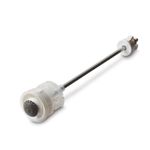
CrushGrind Pepper Mill Mechanism
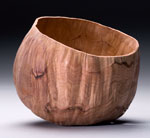






 Excerpted from:
Excerpted from:

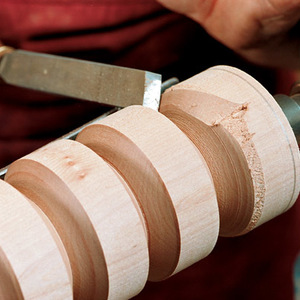
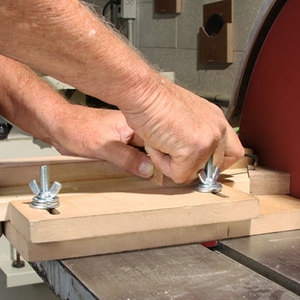
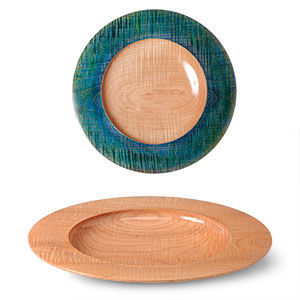
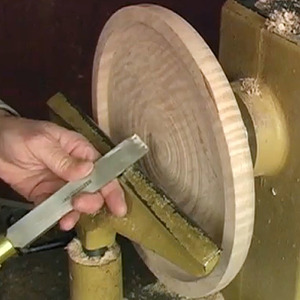






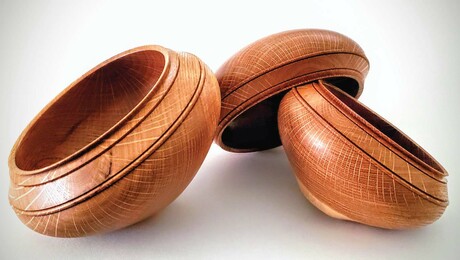








Log in or create an account to post a comment.
Sign up Log in